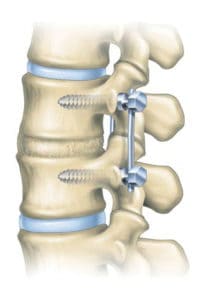When it comes to back surgery…plenty of surgeons, physicians, and other healthcare providers would avoid going under the knife like the plague. Why then is it, that so many patients are recommended to surgery? Even more alarming, some are never even told that they have other options. There are very few instances in which back surgery is an emergency or necessity, and we will cover those here. However, the large majority of back surgeries are both avoidable and come with significant risks.
The Risks
One of the primary reasons why back surgery should be avoided is the risk. All surgeries carry the risk of infection, excessive bleeding, and nerve injury. Not to mention many people don’t like being put under general anesthesia or that they may have to use potentially addictive pills to manage the pain after surgery. Aside from these risks, there’s no guarantee on the outcome of the surgery. And even worse, people aren’t often discussing the outcomes they truly want with the surgeon.
Many times when back surgery is a consideration, the discussion is based around pain. The surgeries are commonly done with the intent to take the pain away. The assumption then, is that without pain, a patient will be able to return to their day-to-day life, or activities they enjoy. Take running, tennis, golf, or even playing with grandkids for example. The surgery is designed to remove the thing causing pain, not get you back to your life. Not to mention, the surgery does not always work to resolve the pain.
We’ve seen cases where the surgery does not end up fixing the pain, and there are cases where the pain may actually become worse. The tissues in your body doesn’t know the difference between surgery and getting hit by a truck; trauma is trauma. So while the surgery may have removed a “bulging disc“, the surgeons had to cut through layers of tissue to get to that disc that your body now also has to heal. Similarly, back surgery is targeted on addressing the one point in your spine that imaging has determined may be the problem. Depending on the type of back surgery, it could end up giving you other issues as well. Take for example a spinal fusion. This is where the surgeon screws plates alongside your spine, in between the bones, to limit movement in that area. The problem is, that with this approach you’re likely to need additional surgeries down the line. This is because the spine is designed to move together. When you limit the movement at one area, the areas next to it have to move more. This increases the stress at those neighboring areas, and they can become painful as well, and it will likely be recommended to get another fusion.

Picture of Screws and Plate For Lumbar Fusion Back surgery
https://tristarstonecrest.com
When Back Surgery May Be Necessary
Not all back surgeries can be avoided. For example, if there is a tumor, mass, or blood clot encroaching on your spinal cord. These can compress the nerve and lead to serious complications. Another warning sign is when you have a change in your bowel and bladder control, or foot drop. These symptoms indicate a more serious back condition.
When To Avoid Back Surgery
It may be tough to consider avoiding back surgery when you have intense back pain. Considering the risks we outlined above, a conservative approach carries little to no risk, and the surgery will always be there as a second option. A conservative approach first is appropriate for conditions like bulging discs, herniations, sciatica, stenosis, and others. These are the most common back conditions that can lead to unnecessary surgery.
Many people believe that by asking for a second opinion, they are protecting themselves from unnecessary surgery. It’s easy to see why this is a common practice. It’s kind of like if you’re having car troubles and you ask two different mechanics to evaluate the car as well. What you’re trying to determine is which mechanic is being more honest with you. In the case of something that has to do with your future quality of life and movement though, a better second opinion may come from someone outside of the surgical profession. Someone who makes a living getting people better without cutting them open. This person is often a physical therapist.
What To Try Instead
When avoiding back surgery is the main objective, movement is king. Not just any movement though, because different movements will help, or hurt, different types of back pain. It is essential to find the movements that help your back pain, and use them to assist in the healing process. For instance, if you find that you feel better when you’re sitting down, and worse when you’re standing, you may want to try hugging your knees to your chest. If the opposite is true (worse when you’re sitting, and better when you’re standing), you may want to try lying down on your stomach and pressing up onto your elbows.
In the beginning phases of treating your back pain, it’s about pain relief. But remember, that’s also what surgery is about. If you just stop at pain relief, your symptoms can return. For truly lasting solutions you need to find the root cause of all of your pain. This could be anything from the way you stand or sit, to the way you lift things, or it may be due to an old injury you had years ago. For the best results with this, it’s best to work with a trained expert, who can help you find the root cause, and work with you to build a plan to fix it. Again, often the person best suited for this job, is a physical therapist.
Is All Physical Therapy The Same?
Many people have tried physical therapy before, and they’re frustrated that I keep listing that as the profession of choice to assist with avoiding back surgery. It’s important for those to know that not all physical therapy is created equal. For instance, if there’s one therapist responsible for multiple patients an hour it’s likely not a good fit. A one-on-one physical therapy approach is the most effective approach we have found to avoid back surgery.
Many of our clients start out as skeptical, but they realize that they want to avoid surgery at all costs, and that they can always get it if physical therapy doesn’t work. It’s amazing to watch as fear, doubt, and skepticism melt away. As they’re able to wrestle with their kids, play sports, and exercise again without fearing they’re going to hurt their back even worse. The one-on-one physical therapy approach allows for a plan to be customized around each patient and their goals. We don’t just stop at pain relief, we set goals that improve our clients quality of life, and get them back to the activities they love.
If you or someone you know is experiencing back pain, and interested in avoiding surgery, click to fill out a form and we’ll call you to discuss if you would be a good fit for our approach. There’s no risk to inquiring, and if we’re able to help your specific situation, we will tell you so. There’s no reason to believe that back surgery is your only option for getting back to the life you want and deserve. Click the button below to schedule a no risk free consultation today.






